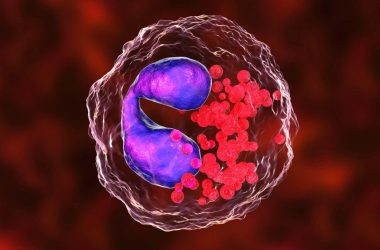Numerous modifications are seen within the brains of individuals with Alzheimer’s, however the actual explanation for the illness is unclear
Science Picture Library/Alamy
A brand new understanding of Alzheimer’s illness means that the foundation trigger includes a build-up of fats droplets in mind cells.
Focusing on these droplets might result in more practical therapies than the present technique of medication that concentrate on proteins, says Michael Haney on the College of Pennsylvania. “This opens up a brand new avenue for therapeutic growth,” he says.
The most common rationalization for Alzheimer’s illness is that it’s brought on by a build-up of a protein known as beta-amyloid in plaques between nerve cells. One other suspect is a build-up of tangles fabricated from a distinct protein, known as tau, saved inside nerve cells.
Arguments over which of those two proteins is the important thing perpetrator have gone on for many years. The amyloid speculation is at the moment within the lead, as some antibody therapies that rid the mind of it have lately proven modest effectiveness at slowing reminiscence loss in individuals with Alzheimer’s.
However this debate ignores the truth that fats droplets will also be seen within the brains of people that have died from the illness, says Haney. These have been first described by Alois Alzheimer, a German physician who gave his identify to the situation within the early twentieth century, when he famous amyloid plaques, tau tangles and fats droplets current within the brains of people that had Alzheimer’s. However for many years the fats was largely neglected.
Within the newest examine, Haney was investigating the largest genetic threat issue for Alzheimer’s illness: a gene known as APOE. The protein it encodes helps transport fats into and out of cells.
Folks have totally different variants of this gene, known as APOE2, 3 and 4. Of those, APOE2 brings the least threat of creating Alzheimer’s, whereas APOE4 brings essentially the most – though till now, it wasn’t clear why.
To shed extra mild, Haney and his colleagues carried out a sequence of experiments whereas he was working at Stanford College in California. First, the group used a comparatively latest method known as single-cell RNA sequencing to determine which proteins have been being made in particular person cells. They utilized this to tissue samples from individuals who had died from Alzheimer’s illness, who had both two copies of the APOE4 variant or two copies of APOE3.
This confirmed that the important thing distinction within the individuals with APOE4 is that immune cells of their mind had greater ranges of a sure enzyme, the impact of which was to spice up fats droplets in these cells.
In an extra experiment, the group grew this type of mind immune cell – known as microglia – in a dish, utilizing cells from dwelling individuals with both the APOE4 or APOE3 variant. Making use of amyloid to the cells made them accumulate fats, particularly if they’d the APOE4 variant.
The group concluded that in Alzheimer’s, a build-up of amyloid triggers fats accumulation. This then results in the build-up of tau inside neurons, which causes cell demise, and so results in the signs of reminiscence loss and confusion.
Earlier research have discovered that different genes that elevate Alzheimer’s threat, however to a lesser extent than APOE4, are usually concerned in fat metabolism or the immune system, which additional helps their speculation, says Haney.
Irundika Dias at Aston College in Birmingham, UK, who wasn’t concerned within the work, says earlier research have recommended fats metabolism in other forms of mind cells is also taking part in a job. “The frequent factor tying all these [findings] is involvement of lipid [fat] metabolism,” she says. “However it is a very attention-grabbing paper.”
The discovering comes as separate analysis suggests dangerous APOE gene variants are behind greater than three-quarters of Alzheimer’s instances. That work, by Dylan Williams at College School London and his colleagues, was based mostly on a inhabitants examine known as UK Biobank, which recorded the APOE variant individuals had and tracked their well being information.
In contrast with individuals who have two copies of the least-risk variant, APOE2, these with both one or two copies of the opposite variants have been almost 4 occasions extra prone to get Alzheimer’s illness, they reported in a paper posted online.
Because of this about 75 per cent of people that get Alzheimer’s wouldn’t achieve this if we might by some means intervene on this molecular pathway, says Williams. “Provided that we’re in a uncommon place the place variations on this one protein appear to be chargeable for a big majority of the illness burden, if we design medication the place we might by some means mitigate that threat, we might count on to forestall most illness.”
Matters:












